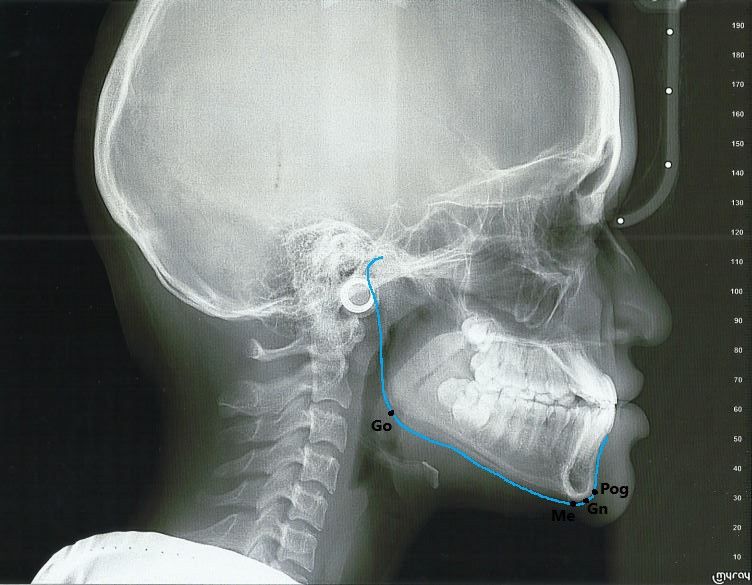
The location and function of the mandible is important for proper orthodontic treatment. The mandibular plane represents the lowest horizontal plane on a patient’s face. It is usually plotted by connecting anterior and posterior skeletal landmarks. On the lateral cephalogram it may be constructed using either of these landmarks: (1) Gonion-Menton, (2) Gonion-Gnathion or (3) tangent points on the inferior border of the mandible. The mandibular plane is usually related to the maxillary plane, either the sella-nasion (SN) plane or the Frankfort Horizontal plane, forming an angle which is significantly used for vertical dimension evaluation of the face. The following table shows the different landmarks used by various cephalometric analyses for the mandibular plane.
| Cephalometric Analysis | Mandibular Plane landmarks |
|---|---|
| McNamara | Gonion-menton |
| Tweeds | Gonion-menton |
| Sassouni | Tangent to inferior border of mandible |
| Jarabak | Gonion-menton |
| Coben | Gonion-pogonion |
| Steiners | Gonion-Gnathion |
| Wits | – |
| Ricketts | Gonion-Gnathion |
| Downs | Gonion-menton |
| Jefferson | Constructed Gonion-Menton |
The sample radiograph shows the following landmarks. Gonion (Go) is the most posterior, inferior point on the mandibular angle. Gnathion(Gn) is the most anterior, inferior point on the mandibular symphysis. Menton (Me) is the most inferior point on the mandibular symphysis. Pogonion (Pog) is the most anterior point on the mandibular symphysis.